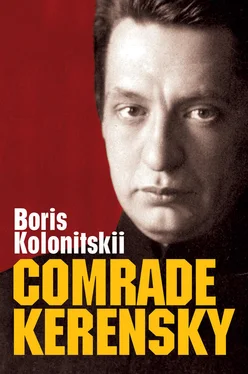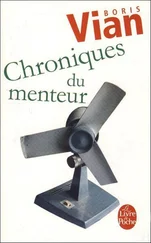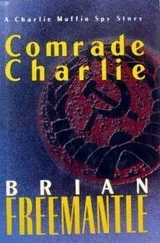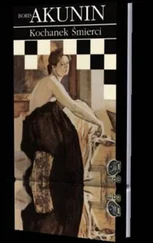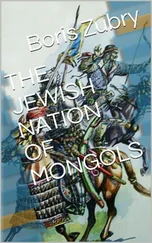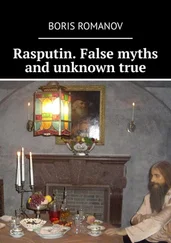For decades before the revolution, Russian revolutionaries had developed the genre of glorification of their martyrs, heroes and teachers. Their techniques of political hagiography were exploited by Kerensky, his supporters and his adversaries. The cult of champions of freedom became the official political religion of the new Russia, and initiatives to establish it enhanced politicians’ authority. Simultaneously, Kerensky’s political collaboration and friendship with authoritative veterans of the liberation movement enabled him to turn their sacralization to his own account.
Even as he actively participated in building up the cult of champions of freedom, Kerensky was a part of the cult, enhancing his own reputation within it by being a contender for the role of true Leader of the people. His heroic biography as an ardent revolutionary fitted well into the sanctified history of the revolutionary movement, which became core to the politics of memory of the new Russia.
The controversy surrounding the biography of Kerensky, who was claiming the status of Leader of the revolution, was rooted in the affirmation of the clandestine political subculture as the basis of new Russia’s political culture. The discussions in effect led to the establishment of a canon of texts and images, symbols and rituals deemed appropriate to inform the cult of the revolutionary leader. In the process some came to acknowledge Kerensky as an authentic Leader. Others did not. As far as the set of qualities the ideal revolutionary Leader needed to possess, both sides were in agreement. The existing cult of fallen or still living champions of freedom provided the requisite discursive framework for forming the cult of the Leader.
The creativity manifest in the cultural politics of the first months of the revolution, in which Kerensky himself played an active role, exerted no little influence on Soviet political culture. The latter was also to include a cult of ‘champions of freedom’, a canon for describing the life of the Leader, and a combining of the patriotic military and revolutionary traditions. The texts, symbols, ceremonies and rituals, created on a foundation of revolutionary tradition to resolve current political tasks at the time of the February Revolution, were to prove applicable to the tasks of later years.
1 1. Edinstvo, 14 May 1917.
2 2. Irina Zhdanova, ‘“Vek propagandy”: Upravlenie informatsiei v usloviiakh voiny i revoliutsii v Rossii v marte–oktiabre 1917 g.’, Otechestvennaia istoriia, no. 3 (2008): 129–36, here p. 130.
3 3. Aleksandr Kerenskii, Rechi A. F. Kerenskogo o revoliutsii, s ocherkom V. V. Kir’iakova ‘Kerenskii kak orator’ (Petrograd: Kopeika, 1917), p. 50.
4 4. V. B. Zhilinskii, ‘Organizatsiia i zhizn’ okhrannogo otdeleniia vo vremena tsarskoi vlasti’, Golos minuvshego, nos. 9/10 (1917): 255.
5 5. O. L-v, ‘A. C. [sic] Kerenskii pod nabliudeniem okhranki’, Novaia zhizn’, 20 April 1917. The author of this publication may have been O. L. Leonidov, who is mentioned in the text. See also ‘Tsarskaia okhranka ob A. F. Kerenskom’, Petrogradskaia gazeta, 27 June 1917.
6 6. A file of documentation relating to Kerensky was found in Saratov (he was elected to the State Duma as a representative of Saratov province). Zhivoe slovo, 12 March 1917.
7 7. Here and hereafter the figures for print runs are taken from Knizhnaia letopis’ for 1917.
8 8. Aleksandr Fedorovich Kerenskii (Po materialam Departamenta politsii) (Petrograd: Tsentral’nyi komitet Trudovoi gruppy, 1917), p. 3.
9 9. Rechi A. F. Kerenskogo (Kiev: Blago naroda, 1917), pp. iii–iv.
10 10. Anon, Syn Velikoi Russkoi Revoliutsii Aleksandr Fedorovich Kerenskii: Ego zhizn’, politicheskaia deiatel’nost’ i rechi (Petrograd: Petrogradskii listok, 1917).
11 11. Vasilii Kir’iakov, Zapiski deputata 2-i Gosudarstvennoi Dumy (St Petersburg: Vernyi put’, [1907]).
12 12. Rafail Ganelin, Rossiia i SShA, 1914–1917: Ocherki istorii russkoamerikanskikh otnoshenii (Leningrad: Nauka, 1969), p. 371.
13 13. Vasilii Kir’iakov, ‘A. F. Kerenskii’, Niva, no. 19 (1917): 287–8; no. 20 (1917): 294–7.
14 14. Kir’iakov, Niva, no. 20, p. 294.
15 15. Ibid., p. 287; V–i V. [Vasilii Vasil’evich Kir’iakov], A. F. Kerenskii (Petrograd, 1917), p. 3.
16 16. Ibid., p. 36.
17 17. Ibid., p. 35.
18 18. Ibid., p. 16.
19 19. Vasilii Kir’iakov, Dedushka i babushka russkoi revoliutsii: N. V. Chaikovskii i E. K. Breshko-Breshkovskaia (Petrograd: Novaia Rossiia, 1917).
20 20. Oleg Leonidov, Vozhd’ svobody A. F. Kerenskii (Moscow: Koshnitsa, 1917). Leonidov continued to publish popular biographies of political and military figures in the Soviet period. See [Oleg Leonidov], Kliment Efremovich Voroshilov: Zhizn’ i boevaia rabota, ed. Sergei Orlovskii (Moscow: Gosudarstvennoe voennoe izdatel’stvo, 1925); M. V. Frunze: Biografiia (Moscow: Ogonek, 1925); S. M. Budennyi, vozhd’ krasnoi konnitsy: Materialy dlia biografii S. M. Budennogo i istorii I Konnoi armii (Leningrad: Gubkompom, 1925); etc. Leonidov also wrote screenplays on themes from the history of the revolution, for example, Moskva v Oktiabre (Bor’ba i pobeda) (1927). Other screenplays were Deti kapitana Granta (1936) and Ostrov sokrovishch [Treasure Island] (1937).
21 21. Oleg Leonidov, Vozhd’ svobody A. F. Kerenskii, 2nd, supplemented edition (Moscow: Koshnitsa, 1917), pp. 5–6, 17.
22 22. Ibid., pp. 31, 32.
23 23. Ibid., pp. 4–5.
24 24. Ibid., pp. 8, 16, 31.
25 25. Ibid., pp. 3, 24, 25, 26.
26 26. E. V[ladimirovi]–ch, A. F. Kerenskii narodnyi ministr (Odessa: Vlast’ naroda, 1917).
27 27. Ibid., p. 3.
28 28. The only other studies to appear were of Breshko-Breshkovskaya, Brusilov and Kropotkin. See Russkie portrety, 1917–1918 gg., ed. Mikhail Fleer (Petersburg: GIZ, 1921), pp. 6, 7, 25.
29 29. Tan (Vladimir Bogoraz), ‘A. F. Kerenskii: Liubov’ russkoi revoliutsii’, Geroi dnia: Biograficheskie etiudy. Obshchestvenno-politicheskii ezhenedel’nik (Petrograd), no. 1 (1917), pp. 2–4.
30 30. Ibid., pp. 2, 4.
31 31. Ibid., p. 2.
32 32. Ibid., pp. 3, 4.
33 33. The July Crisis, or ‘July Days’ of 3–5 July, after the failure of the June Offensive against Austria and Germany and the resignation from the Provisional Government of the Constitutional Democrats, was a period of left extremist demonstrations demanding disbandment of the Provisional Government and the transfer of all power to the soviets of workers’ and soldiers’ deputies. When the attempted coup failed, the Bolshevik leaders, Lenin and Zinoviev, went into hiding. [Trans.]
34 34. V. Vysotskii, Aleksandr Kerenskii (Moscow: Tipografiia tovarishchestva Riabushinskikh, 1917), p. 21.
35 35. Ibid., pp. 9–10, 31.
36 36. Ibid., pp. 7, 11, 18, 19, 20.
37 37. Ibid., pp. 19–20.
38 38. Partiia sotsialistov-revoliutsionerov: Dokumenty i materialy, 3 vols, ed. Nikolai Erofeev (Moscow: ROSSPEN, 2000), vol. 3, part 1: ‘February–October 1917’, pp. 331, 333, 724.
39 39. Lidiia Armand, Kerenskii (Petrograd: [Kopeika], 1917), p. 4.
40 40. Ibid., pp. 3, 15.
41 41. Ibid., pp. 8, 13, 14.
42 42. Ibid., p. 8.
43 43. Vasilii Kir’iakov, ‘A. F. Kerenskii’, Niva, no. 19 (1917), p. 287; V–i V., A. F. Kerenskii, p. 4.
44 44. Kir’iakov, Niva, no. 19 (1917), p. 287.
45 45. E. V–ch, A. F. Kerenskii narodnyi ministr, p. 4.
46 46. V–i V., A. F. Kerenskii, p. 4. Kerensky himself subsequently wrote about these childhood impressions in The Kerensky Memoirs: Russia and History’s Turning Point (London: Cassell, 1966), p. 4. ‘N. Lenin’ was the pseudonym of Vladimir Ul’ianov.
47 47. Anon, Syn Velikoi Russkoi Revoliutsii, p. 3.
Читать дальше
